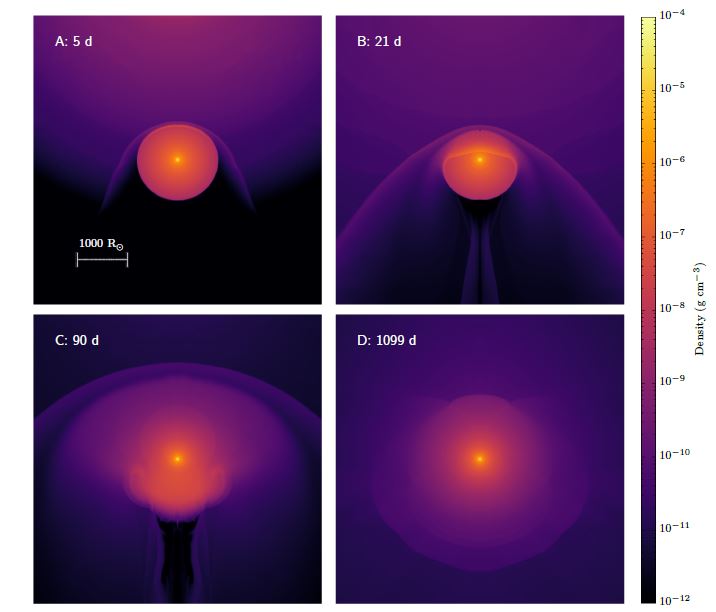Something huge ripped the skin off this star before it died
Where did Cassiopeia A's skin go?

A giant star died, blasting its guts out into space. But before the star detonated, some stellar thief had already stolen the giant's skin. Now, astrophysicists think they've identified the culprit: another star blasting its own guts out nearby.
Supernovas are fairly common in space. Most very large stars end their lives as stellar explosions. When they die, hot clouds of gas spread across space. Those clouds are full of the heavy atoms the stars fused into being in the nuclear engines of their bellies. But usually there's hydrogen — the element that stars initially fuse into helium to get their engines started — in the clouds too: These simple, single-proton atoms remain in the outer skin of the star, where pressure and heat never got high enough to fuse them together into heavier elements. It's unspent fuel, in other words. Sometimes, however, that skin vanishes. Usually gravity from a nearby star —— such as a binary twin in the same system — strips that outer envelope of hydrogen away. Sometimes, however, it's not clear where all the hydrogen-rich skin went. For a long time, that was the case for the supernova remnant Cassiopeia A (Cas A). But not anymore.
Related: 8 ways you can see Einstein's theory of relativity in real life
In a new paper, researchers describe a scenario that could produce a solitary, "stripped-envelope" supernova like Cas A's. Their story, like most skinless supernova tales, begins with two sibling stars in a tight binary orbit around one another. Critically, these siblings were born at the same time in the same place and at nearly the same mass. As a result, the two stars would also live for similar lengths of time, become swollen red giants in their old age, and die in short succession, one after the other.
If Cas A's sibling went first, that first supernova would have effectively sandblasted the surviving big red supergiant (in other words, Cas A), just as Cas A was nearing the end of its own life.
The researchers, a team at the ARC Center of Excellence for Gravitational Wave Discovery (OzGrav) in Melbourne, Australia, simulated how this would work.

Their simulations showed between 50% and 90% of the surviving star's outer skin of hydrogen gets blasted away in the wind of the first supernova, as long as the two stars orbit very close together.
Sign up for the Live Science daily newsletter now
Get the world’s most fascinating discoveries delivered straight to your inbox.
"This is enough for the second supernova of the binary system to become a stripped-envelope supernova, confirming that our proposed scenario is plausible," lead study author Ryosuke Hirai, an OzGrav astrophysicist, said in a statement.
It's also possible for the first supernova to rip off just some of its sibling's envelope, causing that star to be in an unstable state; in this scenario, the instability leads to more hydrogen being expelled from the star before it goes supernova. The star would react like it had just been shot with a shotgun, convulsing and losing fuel to space before its demise, the simulations showed.
If this version of star death happens, it's likely rare, the researchers wrote — occurring in just 0.35% to 1% of supernovas.
And the scenario hasn't been confirmed, though the researchers think it might apply to two other known supernovas, RX J1713.7-3946 and G11.2-0.3.
But Cas A is the most exciting example for a simple reason: The simulation predicts that there should still be a signature of that envelope lost in the first supernova: a puff of hydrogen-rich gas drifting through space 30 to 300 light-years away from the supernova remnant. And in the case of Cas A, they found one such puff, just 50 light-years away — precisely fitting what their model predicted.
Originally published on Live Science










